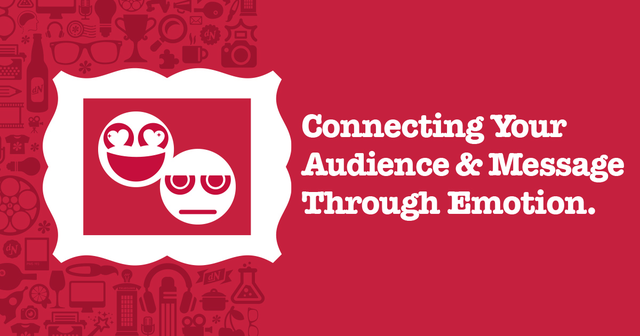
Research in psychological and behavioral sciences has shown the relationship between message recall and emotional response. It's not a new concept, but research continues to evolve around the how and why, which methods are most effective AND which parts of the brain are affected and how.
By evoking an emotional connection in a targeted audience, we, as marketers, can improve brand recall, increase the chances of conversion (the action you are asking the audience to take) and better your top of mind brand awareness with your potential and current clients/customers.
Emotional responses help people pay attention.
Research suggests that emotional stimuli and "attentional functions" move in parallel paths before they integrate within a specific region of the prefrontal cortex (the anterior cingulate). If you want a deep dive into more brain science on attention and memory as they are related to emotional stimuli, get your nerd on here.
Using video as an example, viewers who watch a video that causes them to feel an emotion are more likely to connect with a brand, recall the message and are more inclined to take action. In the video below, which was shown at an annual meeting for the Iowa Women's Foundation and used in subsequent campaigns to build support for the organization, we employed actors to evoke first sadness, then a feeling of inspiration. This was a highly effective campaign.
In the second video, we once again used talent, and combined humor with messaging to help launch the Corridor Rides ridesharing program. In this case, we hired a local Improv group with basic instructions and we filmed them as they "did their thing." When message was off script or incorrect, we used it to our advantage by freezing the screen and correcting the information with text or sharing additional details to add clarity.
Using emotion in marketing
When you craft a message and the creative around the delivery of the message, there are four basic emotions that can be tools. Interestingly, the different emotions affect different parts of the brain and thus have attributes of positive and negative association as well.
The four basic emotions that marketers tend to harness are achieved by:
1. Inspiring your audience - understand their motivations and what they aspire to or are impressed by. Think about what inspires them to take action and what is meaningful to them.
2. Making them smile or laugh - one of the best ways to improve recall and engagement. Think about the videos you are most likely to share, tell others about or remember.
3. Making them sad - used carefully, this can be a powerful response. (It's also a little tricky!) When using this tactic, it's often paired with a request to help change or correct something. If you've brought something to the attention of the viewer that causes this emotion, a strong call to action can be most effective, as you are allowing them to be a part of the solution.
4. Provoking anger/outrage - one of the riskiest tactics, bringing to light a sensitive issue can be another way to connect. But you have to admit, 2016 & 2017 have seen an increase in this tactic. Evoking anger can create negative associations, so it must be used as a tactic very conservatively. (No pun intended.)
Expert marketers know how to use these elements carefully, weigh the risks and craft the delivery of the message in the imagery, tone and voice by dully understanding their target audiences. This goes back to always using a strategic approach when embarking on any marketing activity, and ensuring that you have all the resources needed to make the project effectively happen.
Before embarking on a project with the intent to connect emotion and message, ask yourself the following:
1. Do I fully understand the target audience's motivations, pain points or desires, AND,
2. Is the tactic I'm using appropriate, AND,
3. Can I pull this off with the resources I have (See the Venn Diagram of Getting Sh!t Done)?
A lot of brands are reticent to use emotion (specifically humor) in marketing projects, even though bigger brands do it prolifically, with video and imagery being the primary delivery vehicles. It's a balance and takes experience and attention to get it right.
Need help? We're a click away.






Submit a Comment